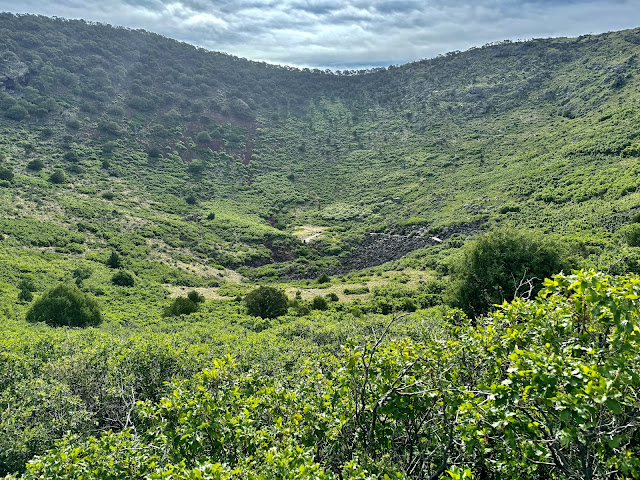 |
| Photo by L. Crumpler |
It's so much easier to capture the Western myth than the ineluctable magnificence of the landscape. I'd stayed the night before in Clayton where the main street wasn't paved until 1928. The ad for the Kokopelli Lodge promised a pool but a sign taped to the lobby door said it was closed indefinitely. No matter. A pounding thunderstorm had ended with one of the biggest rainbows I've ever seen, reducing the temperature by nearly 30 degrees after a long drive from Oklahoma City, where it peaked for the day at 104.
I got a kick out of the motel's well-executed design motif.
Meet Kokopelli, a flute-playing fertility deity from the local indigenous culture. He's also a trickster god which makes sense given the pool closure.
Capulin National Monument, a long extinct volcano just off Highway 87 gave me a quick opportunity to use the National Park Service senior pass that Thom gave me for Christmas several years ago. A road sign pleaded "brake for snakes" as I drove up a winding road that often lacked guardrails.
Four states--New Mexico, Texas, Oklahoma and Colorado--can be seen from the cinder core volcano's summit. Apparently, it's under some of the darkest skies in the country at night, making it an ideal place to stargaze. Other volcanoes, part of the Raton-Clayton field which covers 7,500 square miles, are visible in the distance.
Smoke and magma last spewed from its core 60,000 years ago. "Capulin" is the Mexican/Spanish word for the chokecherry trees which grow abundantly inside the crater.
More Seattle Road Trip:
Seattle Road Trip






No comments:
Post a Comment